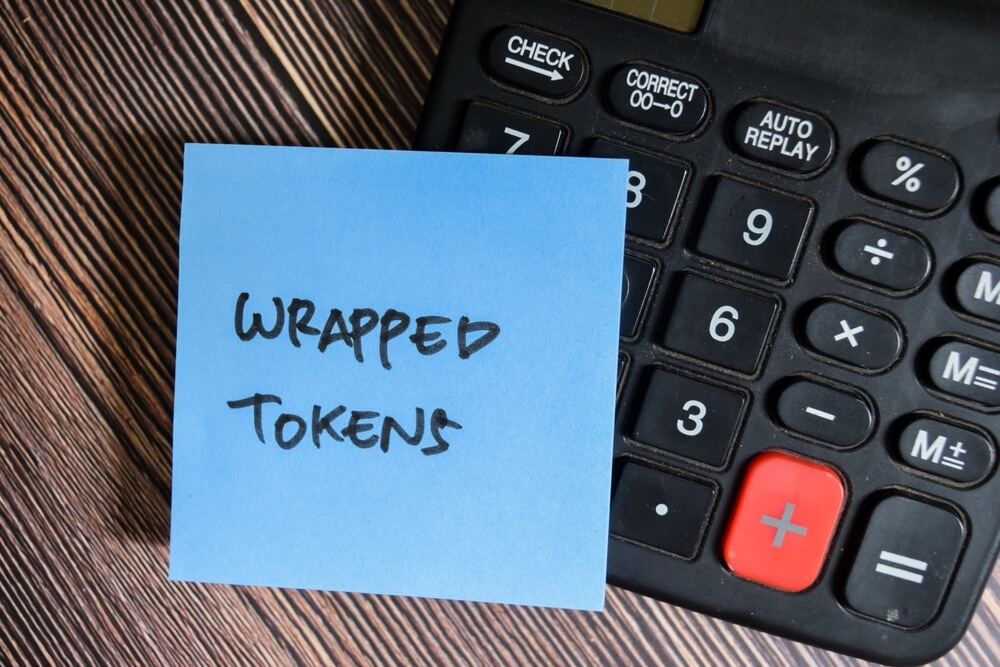
What Are the Key Risks with Wrapped Tokens?
Wrapped tokens are an exciting development in the cryptocurrency world, allowing different blockchain networks to interact with each other and making various assets more versatile and accessible. Here’s an easier-to-understand breakdown of what wrapped tokens are, how they work, their advantages, and key risks with wrapped tokens.
To cut a long story short, wrapped tokens are digital assets that represent another asset from a different blockchain. Think of them as a kind of “wrapper” that allows one cryptocurrency to be used on another blockchain network where it wouldn’t normally operate.
For example, Bitcoin can be converted into Wrapped Bitcoin (WBTC), which then works on the Ethereum network.
What is Bitcoin?
Of course, it is important to understand the key risks with wrapped tokens and related topics.
Bitcoin, created by an individual or group of people under the pseudonym Satoshi Nakamoto, was introduced in 2009 as the first cryptocurrency. At its core, Bitcoin was designed as a digital alternative to traditional currencies, aiming to provide a decentralized form of money that does not rely on any central authority or government.
The primary purpose of Bitcoin is to enable peer-to-peer transactions without the need for intermediaries like banks or financial institutions.
The technology underpinning Bitcoin is the blockchain, a public ledger that records all transactions across a network of computers. Bitcoin’s blockchain is maintained by miners who use powerful computers to solve complex mathematical problems—a process known as proof-of-work. This mining process not only processes transactions but also secures the network and introduces new bitcoins into the system through mining rewards.
Bitcoin’s key attributes include its limited supply (capped at 21 million coins), which underpins its appeal as a digital store of value, often described as “digital gold.” It offers attributes such as portability, divisibility, and resistance to censorship, making it a potent form of money for the digital age.
What is Ethereum?
Ethereum, proposed in 2013 by programmer Vitalik Buterin and launched in 2015, is a blockchain platform that extends beyond the basic functionalities of Bitcoin. While Ethereum includes a cryptocurrency called Ether (ETH), it is fundamentally a programmable blockchain that supports decentralized applications (dApps) and smart contracts.
Smart contracts automatically execute transactions and run programs when predetermined conditions are met, without the need for a central authority or external enforcement mechanism.
Ethereum’s introduction of smart contracts has opened up a vast field of possibilities for decentralized finance (DeFi), supply chain management, digital identity verification, and much more, making it fundamental to the concept of a decentralized internet, or Web3.
Developers can build and deploy their own decentralized applications using Ethereum’s platform, utilizing the solidity programming language and benefiting from the security and decentralization of the Ethereum network.
Ether, the native currency of Ethereum, is used to compensate participants who perform computations and validate transactions (miners). Unlike Bitcoin’s capped supply, Ether does not have a fixed total supply, contributing to its primary role as fuel for operating the myriad of applications that run on the Ethereum network.
Comparison and impact
Bitcoin and Ethereum are both highly influential in the cryptocurrency space. Bitcoin is primarily seen as a store of value and medium of exchange, with its security, limited supply, and widespread adoption setting the standard for what many consider the first generation of cryptocurrencies.
On the other hand, Ethereum has paved the way for a second generation of blockchain applications with its flexible, programmable infrastructure, fostering innovation across numerous sectors.
While Bitcoin aims to disrupt how money is stored and transferred, Ethereum seeks to decentralize internet applications and services, proving that blockchain technology has applications beyond just simple transactions.
Both cryptocurrencies have significant, though distinct, impacts on the digital economy and continue to shape the landscape of financial and technological innovation.
How do wrapped tokens work?
The operation of wrapped tokens involves a few steps:
Locking the original asset: To create a wrapped token, the original asset (like Bitcoin) is locked in a digital vault or smart contract on its native blockchain.
Minting wrapped tokens: A corresponding amount of wrapped tokens (like WBTC) is created on a different blockchain (like Ethereum). This ensures the value of the wrapped tokens is directly tied to the original asset.
Using the wrapped tokens: These tokens can now be used on the new blockchain, allowing access to new applications and services.
Redemption: If someone wants to convert their wrapped tokens back to the original asset, the wrapped tokens are “burned” or destroyed, and the original asset is unlocked and returned to the user.
Advantages of wrapped tokens
Wrapped tokens offer several benefits:
Interoperability: They allow different blockchain networks to work together, facilitating the movement of assets across these networks.
Expanded utility: Assets like Bitcoin can be used in new ways on different blockchains, such as participating in decentralized finance (DeFi) on Ethereum.
Enhanced liquidity: They make the underlying asset more liquid and accessible on multiple blockchains and platforms, which can help improve trading conditions and price stability.
Access to DeFi ecosystems: Users can engage with a wide range of financial services and products in the DeFi space without needing to switch between different cryptocurrencies.
Stablecoin integration: Wrapped tokens include versions of stablecoins (like US Dollar pegged coins) that can operate across various blockchains, simplifying transactions like cross-border payments.
Risk diversification: They allow users to spread their investments across different blockchains, potentially reducing risk.
Decentralized governance: Some wrapped tokens let holders help make decisions about the project’s future, such as upgrades or funding allocations.
Regulatory compliance: Wrapped tokens can be designed to comply with legal regulations, making them more appealing to institutional investors and traditional financial entities.
Key risks with wrapped tokens
While wrapped tokens have many benefits, they also come with significant risks:
Custodial risks: Since these tokens often rely on third parties to hold the original assets, there’s a risk of mismanagement or theft.
Smart contract risks: The contracts that manage wrapped tokens can have bugs or vulnerabilities that might be exploited, leading to losses.
Centralization concerns: The control over wrapped tokens might be concentrated in the hands of a few, which goes against the decentralized nature of cryptocurrencies and can lead to problems like censorship or biased governance.
Cross-chain risks: Linking different blockchains adds complexity and can lead to technical problems that disrupt token operations.
Regulatory uncertainty: As governments and regulatory bodies are still figuring out how to deal with cryptocurrencies, wrapped tokens might face legal challenges that could affect their use and value.
Market risks: The value of wrapped tokens is tied to the underlying asset, which can fluctuate dramatically, and market conditions can also lead to issues like price volatility or liquidity problems.
Final thoughts
Wrapped tokens are a key innovation in the cryptocurrency space, offering exciting opportunities for asset interoperability and new uses for traditional cryptocurrencies on different blockchain networks.
Nevertheless, key risks with wrapped tokens should be considered like any investment. Investors should thoroughly understand the mechanisms behind wrapped tokens, consider the security of the custody solutions, evaluate the robustness of the smart contracts, and stay informed about the regulatory environment.
By weighing these factors, users can make more informed decisions and potentially enjoy the benefits of wrapped tokens while minimizing potential drawbacks.




